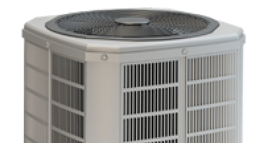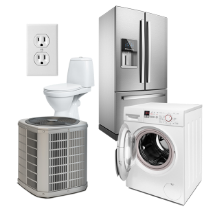Growing a strong garden often starts in March. Whether you’re growing from seeds or purchasing pre-sprouted plants, starting your gardening in March can give you a head start on growing a lush garden of veggies and herbs. Here are a few steps to starting your garden in March.
Pick the Right Plants
The first step to prepping your garden in March is picking the right plants. Some of these plants you can put directly in the ground in March. Others will need a little more nursery time indoors before you transplant them into your garden. Let’s look at a few common plants you could choose and how to tend to them early on.
Plants to nurse inside first
If you like any of the following plants, you’ll want to nurse them indoors in March to prepare them for transplanting in the Spring.
- Tomatoes
- Peppers
- Eggplant
- Herbs: Basil, oregano, thyme, and sage
Whether you’re growing these plants from seed or bought some sprouts from a garden shop, it’s best to give them plenty of light and water. You can place them in a window that gets abundant sunlight or use grow lights. Just make sure that the soil stays evenly moist, but not saturated, to help them thrive.
If you’re growing from seed, use a lighter potting soil instead of a heavier garden soil. Garden soils can smother seeds and introduce diseases that stunt or kill the seeds before they can sprout.
After about 6-8 weeks, you can transplant your seedlings outdoors in places that are appropriate for each plant.
Plants to put in the ground
The following plants can survive and thrive if you plant them straight in the ground toward the end of March:
- Beets
- Onion
- Cabbage
- Cucumbers
- Spinach
However, you’ll need to make sure that the areas you plant any of these veggies get plenty of sun and have soil that drains well. Because they’ll still need to weather the elements, you don’t want to plant in a place that can get water logged or that doesn’t get enough sun, as it will likely kill anything you plant.
Find and Clean Out Your Garden Plot
The next step is to either find a spot to plant or clean out your pre-picked spot for gardening.
The seed packet or seedlings you purchase will often include instructions on how much water and sun a certain plant needs. If you have limited space, make sure that you aren’t picking plants that like the exact same conditions, otherwise they may crowd each other out or not survive at all.
Once you’ve chosen your gardening spots, make sure you clean them of any leaf or lawn debris. If you raked leaves into a garden bed the winter before, clear them out. If you notice any weeds, pull them when the soil is moist but not water logged.
Start Gardening!
Put the plants that thrive in cool weather in the ground. Take care of your indoor seedlings until the time is right.
Whether you’re directly planting or transplanting, be sure to clean your garden tools first. Pathogens can live on dirty tools, which can infect your seeds/seedlings before they have a change to take hold.
Additionally, consider planting flowers near your veggies and herbs. Flowers can attract pollinators like butterflies and humming birds. In addition to being pretty themselves, they’ll help pollinate your plants.
Watch for Pests
Catching pests early can make bed maintenance much easier later in the year. The biggest pests include aphids and mealybugs. You can control them with neem oil or a light mixture of dish soap and water.
If you see ladybugs or praying mantises near your plants, that’s a good sign that you have a natural pest control element in your garden. Ladybugs and mantises are great at killing and eating some of the most common pests you’ll find in your garden.









